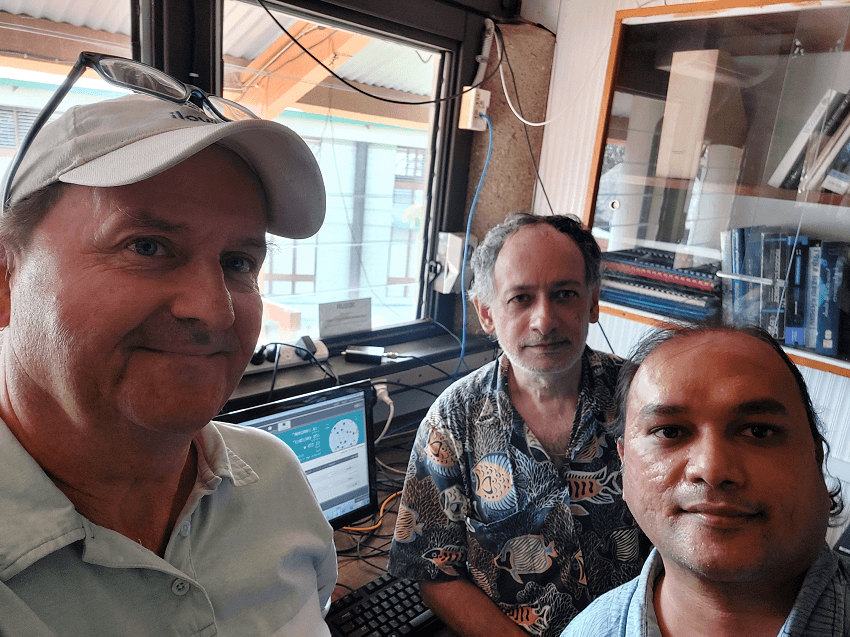Related News

A Weak Signal Propagation Reporter Network Node transmitting beacon, the first in the South Pacific Island region, was installed at The University of the South Pacific (USP) Amateur Radio Club on 5 June 2022
Amateur Radio has been a hobby shared by people from all walks of life since the early twentieth century, who all share a passion for experimenting with radio transmission and reception.
At USP, an amateur radio club was started in the early 1980s by then Physics lecturer Mr Richard Northcott. It has recently been revived by Dr Antoine De Ramon N’Yeurt and Mr Neil Raj Singh in the discipline of Physics in the School of Information Technology, Engineering, Mathematics and Physics (STEMP) with support from Professor Sushil Kumar, who provided space for the club.
The Weak Signal Propagation Reporter Network (WSPRnet) is a group of amateur radio operators that probe radio frequency propagation conditions using very low power (typically 100mW to 200mW) transmissions. The software is open source, and the data collected are available to the public through dedicated websites (e.g. https://www.wsprnet.org/drupal/). As part of the vast network, the Arduino-based WSPR transmitting module and multi-band antenna setup belonging to the International WSPR Beacon Project (Phase I) will produce invaluable data on propagation conditions from Fiji to all parts of the world.
Transmitting on a roster of preset frequencies spanning the high-frequency spectrum enables the collecting and displaying of WSPR reception reports correlating the data with solar indices and Ionospheric key indicators to understand high-frequency radio propagation better and eventually develop a self-learning computer-based propagation prediction model.
The USP WSPR Beacon node was kindly donated by an amateur radio operator in Switzerland (Mr Roland, HB9VQQ) and installed as a joint effort by the Fiji Association of Radio Amateurs (FARA) and involved PaCE-SD Senior Lecturer Dr Antoine De Ramon N’Yeurt (amateur radio call sign 3D2AG), Mr Phillip J. Hardstaff (3D2TC) and Mr Neil Raj Singh, Physics Laboratory Technician at STEMP.
The first Spots and reports were generated on 5 June 2022 at 11:30 am (FJT) with stations in Australia and New Zealand. Since then, almost 17,000 spots have been generated from over 100 different countries, the record distance being with the WSPR monitoring station EA8DBFK in the Canary Islands, near Spain and Europe (18,304 km). Real-time statistics from the USP WSPR beacon can be seen online at the following link: Station Stats – Grafana (wspr.live).